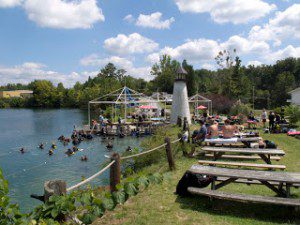One of the real upsides to being a writer/photographer is that I can work just about anywhere there is a wifi connection. And when I am working, I am usually pretty still. I sit quietly with my computer in my lap and type, thinking as I go. Of course, I prefer to work places where it’s quiet with a minimum of distractions. That said, sometimes the distractions can be inspirational in their own right.
Sitting outside on my patio, I heard an odd buzzing sound over my shoulder. It sounded like a bee, but if it were a flying insect it would’ve had to have been really close. And there was nothing there. Looking a little further out, I saw two hummingbirds darting in and out of the flowers and the feeder I have set up. I went back inside and got my camera, switched to my longest lens, resumed my spot and waited. It wasn’t long until they came back around.
Of course, hummingbirds don’t sit still for long, and they are really small moving targets so I missed more than I got. But I got a couple good ones.
It turns out, these are Ruby Throated Hummingbirds. According to the WV Division of Natural Resources, this is the only species of hummingbird present in West Virginia and they are only here during their nesting season. That means, more than likely, there is a nest with babies somewhere close by. The DNR has more information if you want to read about them.
Surveying the area just beyond my back fence there is still a large pile of broken limbs from the tree that broke in half during the Derecho storm at the end of June. I keep seeing the birds fly up to those limbs to rest a few minutes. It makes me wonder if they are using the limbs to nest.
I’ve lived away from West Virginia and just recently returned. Not everything is perfect here. I know that. The same can be said for any place you go. (As they say, the grass is always greener…) I’ve lived in California and North Carolina and liked things about both places. And disliked things in both places, too.
This is one of the things I like best now that I’m back. I don’t live out in the country, but I live in a place where nature is literally in my backyard. That can be said for most of the state, I guess. What West Virginia has that many places don’t is quality of life. It is a place where you can be downtown in 10 or 15 minutes or well out in the country in another 15 minutes. It is a place where you can still find places without a cell signal. That may sound like a bad thing, but there are times when it is a very good thing.
For the moment, it’s time to get back to work. But I’ll stay right here on my patio and enjoy the buzzing sound of hummingbirds, knowing they are raising babies in my backyard, and enjoy the scenery..








